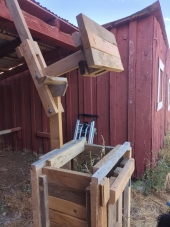

Red River Crabgrass is commonly found throughout Nebraska, south and east to the Gulf and Atlantic coasts. Red River is adapted to many soil types, but will grow best on sandy and clay loam soils that have good drainage. Great for revitalizing pastures, Crabgrass can be utilized as both hay and grazing. This variety of crabgrass will produce highly digestible forage and high crude protein content. Non-GMO.
Planting Rate: 5-8 lbs per acre
Planting Date: Spring, Summer & Early Fall
Planting Methods: Ideal pH 6.0-7.0. Seed must be placed in a depth range on the soil surface up to no more than ½ inch deep. Best planted on a very good fine, firm, freshly finished seedbed by broadcast and drag or shallow no-till drill after soil temperatures are 65 and rising. Easy double cropping with cool season annual grasses and legumes.
Care: Graze when grass reaches 6-8 inches. Best known for its ability to spread and regrow after grazing, if allowed to go to seed will germinate as a volunteer forage the following year.




